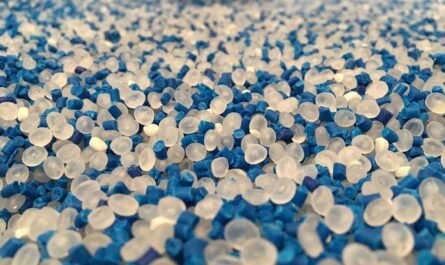Rheology modifiers are additives that are used to alter the viscosity and flow properties of fluids. They work by absorbing water while simultaneously swelling, which increases the fluid’s viscosity and shear thinning properties. Common rheology modifiers include:
– Natural gums such as xanthan, guar, and cellulose-based polymers
– Synthetic polymers like polyacrylamides, polyacrylates, and hydrophobically modified ethoxylated urethanes (HEURs)
Rheology modifiers are very effective even when used in small concentrations of less than 1%. They provide thickening, suspension, and stability without significantly impacting other properties of the fluid they are added to.
Applications in the Food Industry
Many foods and beverages contain rheology modifiers to achieve the proper texture. For example:
Sauces and dressings rely on Rheology Modifiers to thickened without affecting flavor. Xanthan and guar gums are commonly used to suspend oil and water mixtures and prevent separation. They create a smooth, luxurious texture.
Bakery fillings like pies, pastries, and cakes contain stabilizers like propylene glycol alginate to prevent settling and maintain a smooth consistency. These modifiers help bind water and keep moisture evenly distributed.
Yogurt, sour cream and other dairy products use gel-forming and shear-thinning additives such as carrageenan and cellulose. This gives the impression of richness while imparting a creamier mouthfeel.
Soups benefit from guar, xanthan, and cellulose gums, which prevent ingredients from separating and give broths a silky texture without changing flavor. These modifiers suspend vegetables and proteins evenly.
Uses in Personal Care and Cosmetics
Formulating cosmetics and personal care products requires precise rheology to feel luxurious and perform as expected. Some key uses of rheology modifiers include:
Lotions, creams, and hair conditioners contain polymers that control viscosity, prevent separation of oil and water components, and leave products feeling rich without being greasy. Common choices are cellulose gums, guar and xanthan derivatives.
Toothpastes rely on fumed silica and cellulosic thickeners to suspend active ingredients and give the smooth, non-drip texture preferred by consumers.
Makeup foundations, concealers, and other color cosmetics require special suspension properties to ensure pigments disperse evenly without settling. Hydrophobically modified silica and HEUR polymers are frequently used.
Personal lubricants utilize rheology modifiers like polyacrylate dispersions to produce the characteristic tacky texture that doesn’t evaporate quickly or stain fabrics. Viscosity control is crucial for the intended effects.
Paints, Coatings and Construction Materials
Specialized additives enhance the usability and performance of many industrial formulations:
Paints and surface coatings are thinned with cellulosic polymers, acrylics, and diutan gums to maintain a smooth, brushable consistency. Thickening improves Pigment suspension.
Drywall compounds, tile mortars, and cement slurries rely on hydroxyethyl cellulose and similar polymers. Viscosity control prevents materials from sagging or running off surfaces before curing.
Grouts and sealants contain hydrophobically modified thixotropes that remain viscous until shear forces are applied during use then liquefy for easy application and leveling without flowing over edges.
Insulation foams require precise thickening to ensure the liquid component rises and sets into the intended shapes and densities. Cellulose derivatives and HEURs guarantee reproducibility.
Adhesives and glues activate during bonding but resist dripping before contact under viscosity control from rheology additives like AMPS copolymers, starch-based polymers and cellulose esters.
Role in Enhanced Oil Recovery
Petroleum engineers exploit rheology modifiers to coax more oil from reservoirs. Polymers optimize the viscosity of injected and produced fluids:
Polyacrylamide, Xanthan gum, and other high molecular weight water-soluble polymers are injected into reservoirs. They thicken aqueous solutions without forming emulsions or gels that can plug pores.
Increased fluid viscosity improves the mobility ratio between displaced oil and displacing fluid which sweeps more oil from pores toward production wells.
Polymers also partially block conductive channels which redirects fluid displacement pressure into swept zones for enhanced sweep efficiency.
Produced water viscosity control prevents pipe plugging or sand suspension settling during transport. Destabilization at the surface recovers solids and oils for reuse or disposal.
As this article has shown, understanding rheology is essential for formulating optimized products across many industries. These modifiers play a key role by imparting precise flow properties that enhance performance, user experience, reproducibility and more. Continued developments expand their effectiveness in both new and existing applications.




